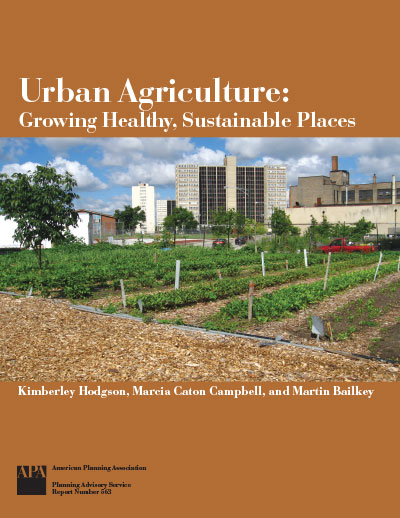
Publisher: American Planning Association
Author(s): Hodgson, Kimberley, Caton Campbell, Marcia, Bailkey, Martin
Document Type: Report
Format: Print
Free of cost: No
Description:
This report provides authoritative guidance for dealing with the opportunities and challenges faced by cities and counties of varying sizes, economies, and locations in supporting and expanding urban agriculture. Through case studies and in-depth interviews with planners, local government officials, and urban agriculture practitioners in 11 cities across the United States and Canada, the report illustrates the range of local government efforts, policies and programs both emerging and in place, and reveals the differences among local governments in their approaches as they respond to the needs of the urban agriculture community. Case study communities included Chicago; Cleveland; Detroit; Kansas City, Kansas and Missouri; Milwaukee; Minneapolis; New Orleans; Philadelphia; Seattle and King County, Washington; Toronto, Ontario; and Vancouver, British Columbia.
Resource Link: Visit web site
Report excerpt: Preview
